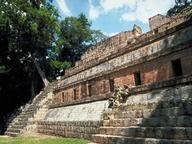Quiz Answer Key and Fun Facts
1. Northern boundary of Roman Empire in modern-day England
2. Most important Minoan city
3. Ancestral Puebloan archaeological site
4. Achaemenid Empire ceremonial capital
5. Capital of Aztec empire
6. Buddist temples in the Kingdom of Pagan
7. Large monastery-temple complexes in India
8. First capital of ancient Egypt
9. Volcanic crater used as rock quarry for moai statues
10. Known for Temple of Artemis
Source: Author
ponycargirl
This quiz was reviewed by FunTrivia editor
gtho4 before going online.
Any errors found in FunTrivia content are routinely corrected through our feedback system.
